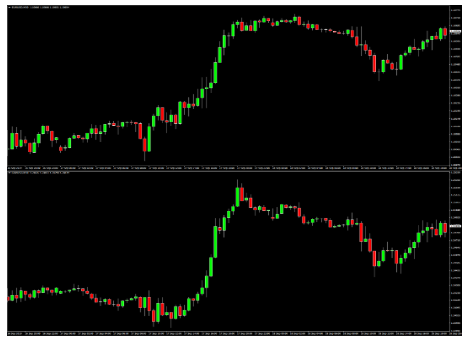Pair trading is an ingenious trading strategy introduced by an assemblage of mathematicians, computer scientists, and physicists by Morgan Stanley and Co. Brought together to study arbitrage opportunities, these researchers developed an automated trading program that would exploit short-term market imbalances and first employed what is presently known as pair trading. Here’s what a pair trading strategy looks like.
What is Pair Trading?
Pair trading is when a trader finds a pair of strongly correlated stocks and takes a long position in one and a short position in another when this correlation temporarily weakens. A long position is when one holds onto a stock with the expectation that its value will grow over time. A short position is when a trader sells a stock whose price they believe will decrease soon. If the correlated reverts back to its historical average (mean reversion), a profit is made from either of the positions.
Since the trader has taken a long position and a short position, the market direction can go either way without it affecting the efficacy of pair trading. Hence, pair trading is referred to as a ‘market-neutral’ trading strategy. For pair trading to be effective, the correlated stocks simply need to return to performing similarly after separating. The pair can also rally or drop together but must return to sync from doing so.
This is the theoretical model upon which a pair trading strategy is based. In actuality, figuring out how to mitigate risk, when to go for a pair trade, and when to exit is much more precise. For one, this strategy is heavily dependent on choosing the right pair of stocks. There are some tips for finding a pair of strongly correlated stocks.
Picking the Right Stocks

The image above is an example of a relatively strong correlation between two different stocks. While this image shows a correlational movement for stocks with respect to a few days, it’s important to assess whether the movement of both stocks has been historically in synchronization. By viewing the 6 months, 1-year, 3-year or 5-year performance of two stocks, the presence or absence of a historical correlation can be gauged.
Another key aspect of picking correlated stocks is that they will likely be from the same sector. Both the stocks in the image are currencies traded on Forex: EUR/USD and GBP/USD. Finally, to assess the correlation between stocks accurately, one can make use of the correlation coefficient. This coefficient is often available as a tool or a chart reading in technical analysis software.
This coefficient gives you a decimal value denoting the strength of the positive or negative relationship between the two stocks. -1 is a 100% negative correlation while +1 is a 100% positive correlation. A 100% or perfect negative correlation means that every time one stock moves up the other will always move down. A 100% or perfect positive correlation indicates that when one stock moves up or down, the other will always follow suit.
EUR/USD and GBP/USD have an ‘almost perfect positive correlation’. This is ideal for pair trading because pair trading is carried out only when there are correlational discrepancies. In a perfect correlation there are no such discrepancies, and, therefore, no opportunities to take on a long position and a short position. Hence, traders seek out strong positive correlations of at least 0.80 in a pair of stocks.
Performing a Pair Trade
The steps to performing a pair trading strategy are simple. Do as follows:
- Form your selection criteria (sector, timeframe)
- Assemble a list of potential trades with at least 0.80 correlation.
- Conduct any fundamental, technical, or other statistical overlays.
- If a correlational discrepancy is observed, execute the trade.
- Manage the trade, by waiting for the pair to reunite.
- Close the trade once the stock reverts to its original correlation.
Pros and Cons of Pair Trading
The benefits of pair trading include spending little to no time having to study broader market conditions. Being a market-neutral strategy, pair trading is easy to implement in most market conditions. Another benefit is that pair trading is a flexible strategy that can be tailored to different kinds of traders. A short term trader can rely on a short time frame and use a smaller standard deviation to trigger multiple trades.
One limitation of a pair trading strategy is that a trader is not assured of the extent to which the correlational divergence between two stocks is temporary. It could last longer than anticipated as a result of fundamental changes in a company. This risk can be managed by setting a stop loss which will automatically exit the trade once the stocks separate beyond a certain point. Another downside is that it is tough to find a pair of stocks with a historical correlation, making this trading strategy more accessible to seasoned traders.






